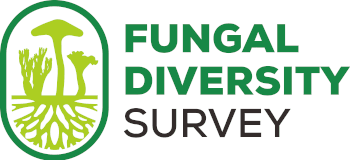1. Document
2. Sequence
3. Voucher
These protocols are designed for those wanting to sequence and /or voucher their specimens.
If you want to start by contributing observations to iNat or MO, click here.
1. DOCUMENT
Before your project begins
- Register your FunDiS Project (see Start a Project)
- Select your primary observation reporting platform: Mushroom Observer or iNaturalist (see Choose a Platform).
- Optional: Order FunDiS field data slips.
In the field
- Photograph specimens carefully, following directions here. Show top, bottom, side and include young and more mature specimens if available
- Use a smartphone or other camera that collects time-stamp and GPS location information (be sure to turn ON your GPS if you want to do citizen science!). Otherwise you will have to add geo-coordinates manually on Mushroom Observer or iNaturalist.
- Optional: Fill out a FunDiS field data slip and photograph it with each collection. Note characteristics that are not captured photographically, and that may be lost during drying, such as taste, odor and staining. Note habitat on the slip, such as nearest trees (at least hardwood vs conifer) or shrubs; a photograph of the habitat is also a good idea. Store the field slip with each specimen.
- Collect specimens, keeping different collections separate.
- For more information see Collect & Document.
At home
- Create a Project in iNaturalist or a Species List in MO. This is where you place your observations for FunDiS. You’ll also use the iNat project/MO lists if you chose to sequence your specimens or send them to a fungarium (voucher).
- Upload photos along with any notes to iNaturalist or Mushroom Observer to create an observation, and then add that observation to your FunDiS iNat project or MO species list.
- If you plan to sequence or voucher your collection write the iNat or MO number on your FunDiS field slip. IMPORTANT: The field slip number is just for keeping track of specimens between the field and home. The iNat/MO observation number (ex: MO Observation 278460 or iNat Observation 6461208) will become the unique Specimen ID for sequencing and vouchering.
- For more information see Document Deep Dive
2. SEQUENCE DNA
Dry specimens
- Specimens must be properly dried as soon as possible after collection if you plan to sequence or voucher any of your specimens. Do not wait to dry after several days of sitting out!
- A food dehydrator with temperature control and a fan is highly desirable if you’re going to be processing a lot of specimens. Dry at 100 - 110 deg. F for 24 to 48 hours depending on tissue mass and humidity.
- Cut off the number on the FunDiS field data slip labeled "Temporary Label for Drying" and tape it to the dehydrator rack with your specimen (so it won't blow around). After drying, your specimens will look very different than when fresh.
- Once they are cracker-dry store each collection in an individual resealable plastic bag (such as Ziploc) with the remainder of the field data slip
- For more information see Dry your Specimens
Collect tissue
- For sequencing you will need to purchase small Eppi tubes for submitting dried tissue pieces from the FunDiS Shop. If your project has a FunDiS sequencing grant, you can order these at no cost.
- Triage: Decide which specimens you would like to sequence and/or voucher
- Take tissue samples of dried specimens following protocols.
- Create a list of specimens for sequencing on iNaturalist or Mushroom Observer. Export as a CSV (comma separated file). Open as a spreadsheet. Print iNat/MO numbers small enough to tape on tubes. Cut out and tape around the vials. IMPORTANT: DON’T hand write numbers, and DON'T use the number on FunDiS field data slip.
- For more information see Collect Tissue for Sequencing
Prepare for shipment to sequencing lab
- Print a list of your specimens from the spreadsheet (as above) to serve as the packing list for your shipment to the sequencing facility, and email a copy to your fungarium contact.
- Fill out the Sequencing Submission - All Projects form in the FunDiS Shop and upload the CSV sheet you exported from iNat or MO.
- DNA results will be emailed to you. Completion time depends on a number of factors. We aim for completion within two months from the time tissue samples are received.
- For more information see Submit Tissue for Sequencing.
3. VOUCHER
Preserve dried specimens in a fungarium
Prepare Specimens for Shipment
- Find a local fungarium, if possible, and contact the manager to determine if you can send specimens and what local requirements they have. See Find, Contact Partner Fungarium. If you cannot find a local fungarium, contact fungarium@fundis.org.
- Export your observations to a spreadsheet. On MO export your Species List (MO) in FunDiS format. On iNat export yourProject (iNat) in Symbiota format(csv).
- Print a list of your specimens from the spreadsheet to serve as the packing list for your shipment to the fungarium. Also email the spreadsheet to the fungarium.
- Ensure each specimen is individually labeled with all of the correct metadata: a species name (or at least genus), collection date, collection location, and the MO or iNat number. Include the Field Data Slip with each specimen.
- Place specimen bags with labeled, dried specimens in a small box along with the packing list, and secure your specimens so they do not move around in the box.
- Email your herbarium about your upcoming shipment, along with the MO/iNat upload spreadsheet.
- Mail your specimens to your herbarium.
- Follow up to ensure that your specimens were accessioned.
For more information see VOUCHER Deep Dive


